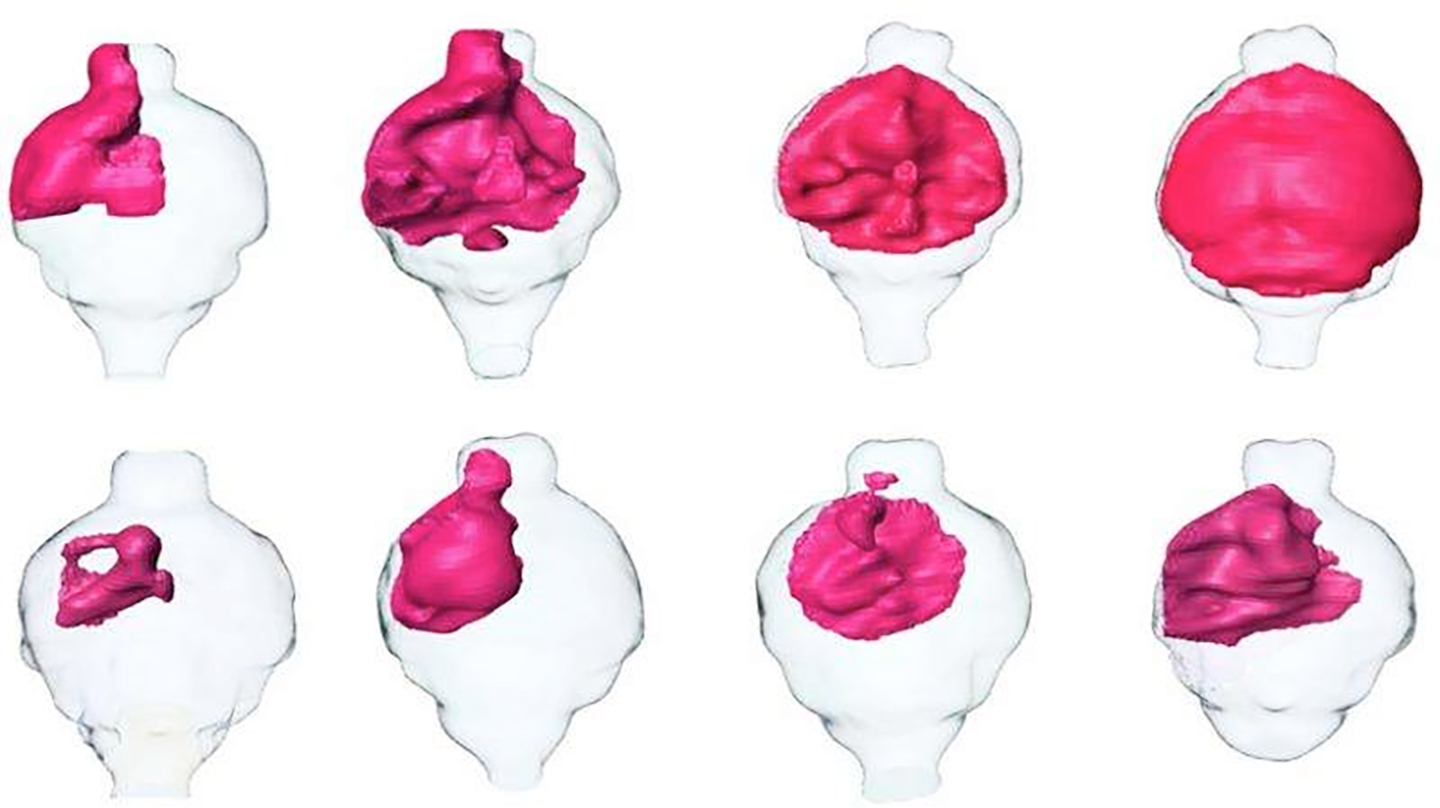Transcription Factor Inhibitors Block Growth of Lethal Brain Tumor
By LabMedica International staff writers
Posted on 10 Nov 2015
A new approach for treating the deadly brain tumor glioblastoma multiforme (GBM) is based on small molecule inhibitors of the major class of protein signaling molecules known as transcription factors (TFs), which are essential for tumor survival and growth.Posted on 10 Nov 2015
Transcription factors are a major class of protein signaling molecules that play critical cellular roles in cancers, such as the highly lethal brain cancer GBM. Although TFs are promising targets for drug intervention, the development of specific TF inhibitors has proved difficult owing to expansive protein-protein interfaces and the absence of hydrophobic pockets.

Image: MRI renderings of mouse brain tumors. Tumors treated with SKOG102 (lower panels) shrank by about half compared to tumors treated with a control (upper panels) (Photo courtesy of the University of California, San Diego).
OLIG2 is a basic helix-loop-helix (bHLH) TF that is critical in tumorigenesis and regulates the survival and expansion of GBM. It is highly expressed in all diffuse gliomas and nearly 100% of glioma cancer stem cells (CSCs) that are positive for the CD133 stem cell marker. Typically, OLIG2 is not active in normal brain tissue and it is not found in normal tissues outside the central nervous system (CNS). The over-expression of OLIG2 in GBM cells inhibits cellular differentiation and apoptosis as well as promotes resistance to chemotherapy and radiation therapy.
Investigators at the University of California, San Diego (USA) utilized a novel combined pharmacophore-based small molecule design methodology, to identify several candidate TF inhibitors. A number of these compounds demonstrated selective OLIG2 pathway inhibition and in vitro anti-GBM potency in biochemical, cell-based, and reporter assays.
The investigators reported in the October 30, 2015, online edition of the journal Oncotarget that the most active compound, SKOG102, was OLIG2 selective. The drug entered the brain and exhibited potent anti-GBM activity in cell-based assays and in pre-clinical mouse GBM models, where it shrank transplanted human glioblastoma tumors by an average of 50%.
"Most drugs target stable pockets within proteins, so when we started out, people thought it would be impossible to inhibit the transient interface between two transcription factors," said first author Dr. Igor Tsigelny, senior program project scientist at the University of California, San Diego. "But we addressed this challenge and created a new strategy for drug design - one that we expect many other researchers will immediately begin implementing in the development of drugs that target similar proteins, for the treatment of a variety of diseases."
SKOG102 will now undergo detailed pharmacodynamic, biophysical, and mechanistic studies in order to better understand its efficacy and possible toxicity. To this end, the compound has been licensed to the drug development company Curtana Pharmaceuticals (Austin, TX, USA), which will groom the inhibitor for clinical applications.
Related Links:
University of California, San Diego
Curtana Pharmaceuticals










 (3) (1).png)


